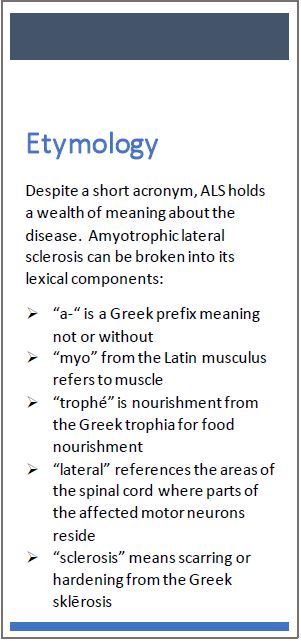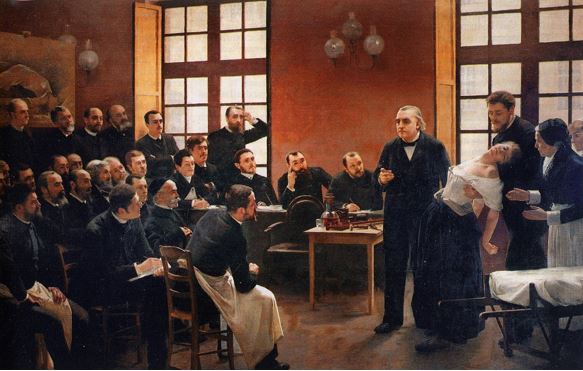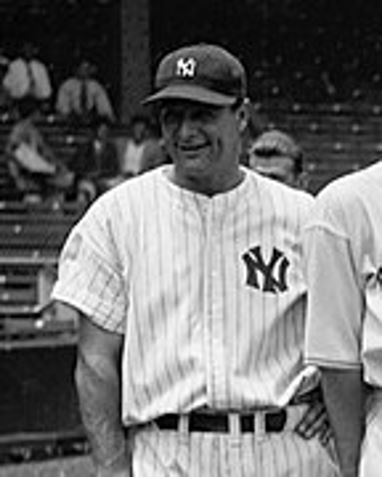A Short History
The 19th century was a period marked by an explosion of medical advances. Vaccines emerged to protect from infectious disease, anesthesia numbed surgical patients and medical imaging used X-rays to improve diagnosis among other examples of progress. This was also the period when physicians began to empirically analyze and differentiate diseases. Smallpox, typhus, yellow fever and scarlet fever were common maladies of the time, with large public efforts emerging against them. Rare diseases, however, received less attention, but detail-oriented physicians began to catalog these orphan conditions. One disease in particular that caught the eye of many distinguished scientists was amyotrophic lateral sclerosis (ALS).

A description of ALS was first recorded in 1824 when Scottish surgeon Charles Bell observed and described the symptoms[i] of a motor neuron disease without identifying it. Others, including French physician François-Amilcar Aran in 1850[ii], Jean Cruveilhier in 1853, and Augustus Jacob Lockhart Clarke in 1860[iii] also noted similar descriptions and conducted studies in patients with symptoms matching that of ALS.
The individual most closely associated with ALS research is Jean-Martin Charcot, a French neurologist who is known as the founder of modern neurology. He made substantial strides in understanding Parkinson’s disease and contributed to the base of knowledge in other areas of neurology including multiple sclerosis, post-traumatic stress disorder and other diseases. In ALS, he was the first to connect clinical symptoms to the pathology seen at autopsy. Charcot detailed the symptoms of ALS noting isolated progressive motor symptoms with fasciculation, contractures, bulbar involvement and death from respiratory failure. He termed the disease ‘la sclérose amyotrophique’ or amyotrophic lateral sclerosis in English translation.

Further advances in ALS were made by Dr. William Osler who recognized a succession of Familiar ALS in the late 19th century. Dr. Osler conducted his work following the history of the Farr family of Vermont where he found 14 clan members that died at an early age presenting symptoms of ALS. In 1880, Dr. William Osler published a medical paper identifying ALS in its hereditary form. The work entitled “Heredity in Progressive Muscular Atrophy as Illustrated in the Farr Family of Vermont” identified several members of the Farr family that had died young from a muscle wasting disease over multiple generations. Later descendants died of the same disease guiding subsequent research to conduct genetic tests when the technology was available. This led to the identification of mutations in the SOD1 gene in 1993 that were associated with the illness.
In the years after World War II, scientists observed an ALS cluster in Guam. During this period there was a surprising emergence of numerous cases in the local Chamorro population on the island at a 50 to 100-fold greater incidence than in the United States. The rise in cases was attributed to increased consumption of food sources that were used as an alternative during war-related shortages.[v] The seeds contained a neurotoxin that is associated with neurodegenerative disease.
The type of ALS specific to Guam is called amyotrophic lateral sclerosis-Parkinsonism dementia complex, or ALS-PDC. The increase in ALS-PDC in the area was attributed to consumption of the seeds of the cycad plant. The flour from these seeds contains many water-insoluble neurotoxic agents. The most neurologically damaging of these is beta-sitosterol beta-D-glucoside (BSSG) which is implicated in ALS-PDC.[vi] BSSG was also shown to induce hyperphosphorylated tau expression in neurons, a hallmark of Alzheimer’s disease and related tauopathies. Further, Guiroy et al.[vii] found that the amyloid of neurofibrillary tangles of Guamanian parkinsonism-dementia has an identical amino acid sequence to that of Alzheimer disease and Down syndrome, providing a link among the neurodegenerative diseases.
ALS in Popular Culture
Being a rare disease, ALS did not receive much attention from the general population in the United States until the late 1930s. It was in 1939 when one of the most popular sports figures of the day, Lou Gehrig of the New York Yankees, was thrown a curveball and diagnosed with the disease. Lou played 17 seasons with the team and broke numerous records. In his last year, he suffered physical changes which led to a decline in his performance and eventual diagnosis at the Mayo Clinic in Rochester, Minnesota. After an inspiring speech which coincided with his retirement, Lou died two years later. This event led to broad recognition of the disease outside of the medical community for the first time and led to the it being commonly labeled Lou Gehrig’s disease in the United States.

In the last decade, the focus on ALS has centered around a few individuals and events. One of the more prominent was the physicist Stephen Hawking, who is best known for his theories on relativity and quantum mechanics. He lived with the early onset, slow progressing form of ALS for over 50 years and during that time was a prolific author, researcher, professor and subject of a popular 2014 movie.
A recent campaign that ushered this rare disease to the forefront was the Ice Bucket Challenge. It was a popular phenomenon that brought politicians, actors and other well-known figures to social media to draw attention to ALS and raise funding to support research. Emerging in 2014, reaching a crescendo the following year and continuing on for several years after, the effort raised over $220 million around the world. The Ice Bucket Challenge was a success and attracted more attention to ALS while providing funds for identifying new genes connected to ALS, research grants, and expansion of the network of scientists working on treatments and a cure.
What’s Next?
The recorded history of ALS extends back almost two centuries and in prominently visible despite addressing a rare disease. The distinguished physicians who have investigated the disorder and the renowned figures who have accomplished great things in spite of ALS illuminate the human side of this neurodegenerative malady, setting the stage for further investigative work. In our next segment of the ALS Curveball series, we will explain the features, examine the types and establish the prevalence of ALS.
Please visit our website at unboxingbiotech.com for other articles in this series.
Follow us on our YouTube channel: Unboxing Biotech.
Endnotes:
[i] https://www.hopkinsmedicine.org/news/publications/hopkins_medicine_magazine/features/winter-2016/an-answer-to-als
[ii] https://www.thelancet.com/journals/laneur/article/PIIS1474-4422(15)00308-7/fulltext
[iii] https://academic.oup.com/brain/article/133/11/3470/310899
[iv] Photo of an oil painting. Une leçon clinique à la Salpêtrière by André Brouillet. Wikimedia Commons.
[v] Kurland, L., Mulder, D. Epidemiologic investigations of amyotrophic lateral sclerosis. I. Preliminary report on geographic distribution, with special reference to the Mariana Islands, including clinical and pathologic observations. Neurology. 1954 May;4(5):355-78. doi: 10.1212/wnl.4.5.355.
[vi] Van Kampen, JM, Robertson, HA. The BSSG Rat Model of Parkinson’s Disease: Progressing Towards A Valid, Predictive Model of Disease. EPMA Journal (2017) 8:261–271 DOI 10.1007/s13167-017-0114-6
[vii] Guiroy, D. C., Miyazaki, M., Multhaup, G., Fischer, P., Garruto, R. M., Beyreuther, K., Masters, C. L., Simms, G., Gibbs, C. J., Jr., Gajdusek, D. C. Amyloid of neurofibrillary tangles of Guamanian parkinsonism-dementia and Alzheimer disease share identical amino acid sequence. Proc. Nat. Acad. Sci. 84: 2073-2077, 1987.
[viii]Lou Gehrig of the New York Yankees, cropped from a posed picture of 1937 Major League Baseball All-Stars in Washington, DC. This work is from the Harris & Ewing collection at the Library of Congress.


























